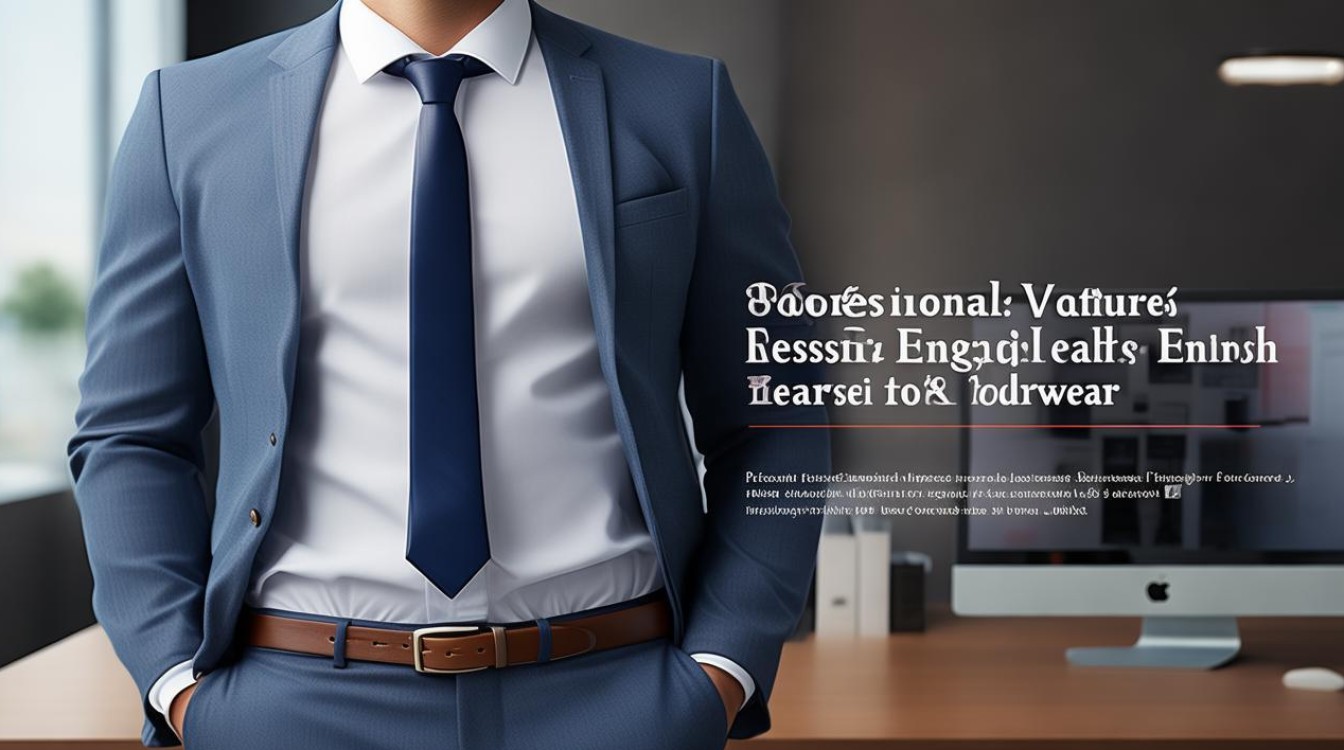In today’s global workplace, understanding professional attire terminology is crucial for effective communication, whether you're shopping for office wear, preparing for an interview, or discussing dress codes. This guide covers key English vocabulary related to professional clothing, helping you navigate formal and business-casual styles with confidence.

Formal Business Attire
Suit (Suit)
A matching set of a jacket and trousers or a skirt, typically made from wool or polyester blends.
- Single-breasted suit: A jacket with one column of buttons.
- Double-breasted suit: A jacket with overlapping front flaps and two parallel columns of buttons.
Blazer
A tailored jacket, often solid-colored, worn with dress pants or skirts. Unlike suit jackets, blazers don’t require matching trousers.
Dress Shirt
A formal shirt with a collar, buttons down the front, and long sleeves. Common styles include:
- Button-down shirt: Features buttons on the collar points.
- French cuff shirt: Requires cufflinks instead of buttons.
Tie
A long piece of fabric worn around the neck, knotted at the throat. Variations include:
- Necktie: Standard business tie.
- Bow tie: A formal alternative, often worn with tuxedos.
Dress Pants
Tailored trousers designed for formal or business settings, often made from wool or synthetic blends.
Pencil Skirt
A narrow, knee-length skirt, a staple in professional women’s wardrobes.
Waistcoat (Vest)
A sleeveless garment worn over a dress shirt and under a suit jacket, adding formality.
Business Casual Attire
Chinos
Casual yet polished trousers, usually made from cotton twill.

Polo Shirt
A short-sleeved shirt with a collar and a few buttons at the neck, suitable for relaxed office environments.
Cardigan
A knitted sweater that opens at the front, often worn over a blouse or dress shirt.
Loafers
Slip-on shoes with a low heel, ideal for business-casual settings.
Blouse
A women’s dress shirt, often with subtle detailing like ruffles or pleats.
Footwear & Accessories
Oxford Shoes
Classic lace-up shoes with a closed lacing system, perfect for formal wear.
Brogues
Dress shoes with decorative perforations, suitable for both formal and smart-casual outfits.
Heels (Pumps)
Closed-toe women’s shoes with a moderate to high heel, commonly worn in professional settings.
Briefcase
A flat, rectangular bag used to carry documents and laptops.

Portfolio
A slim, professional folder for holding resumes or presentation materials.
Industry-Specific Workwear
Scrubs
Lightweight uniforms worn by medical professionals.
Lab Coat
A white coat worn by scientists, doctors, and researchers.
Hard Hat
Protective headgear used in construction and industrial jobs.
High-Visibility Vest (Hi-Vis Vest)
A fluorescent vest worn by road workers and safety personnel.
Chef’s Jacket
A double-breasted white coat worn by culinary professionals.
Dress Code Terminology
Business Formal
Strict professional attire, including suits, ties, and conservative dresses.
Smart Casual
A relaxed yet polished look, blending dress pants with casual shirts or blouses.

Black Tie
Ultra-formal dress code requiring tuxedos for men and evening gowns for women.
Casual Friday
A workplace policy allowing relaxed attire on Fridays, often including jeans and polo shirts.
Fabric & Material Terms
Wool
A natural fiber used in suits and winter workwear.
Polyester
A synthetic fabric known for durability and wrinkle resistance.
Cotton
A breathable, natural material common in dress shirts and chinos.
Linen
A lightweight fabric ideal for summer business wear.
Common Phrases & Expressions
- "Dress for success": The idea that professional attire influences career advancement.
- "Power suit": A sharp, well-tailored suit that conveys authority.
- "Business appropriate": Clothing that meets workplace standards.
Mastering these terms ensures clear communication about professional attire, whether you're shopping, preparing for an interview, or setting a company dress code. A well-chosen wardrobe not only enhances confidence but also reinforces professionalism in any work environment.

